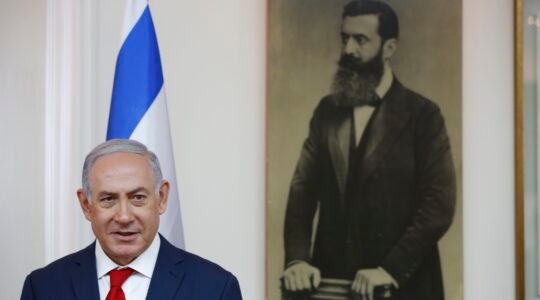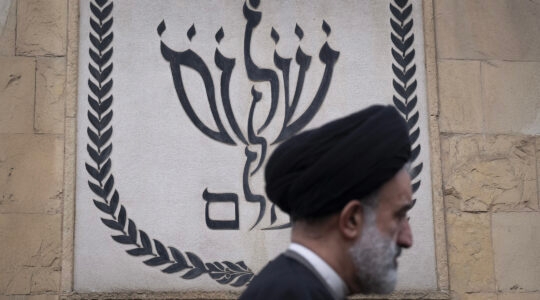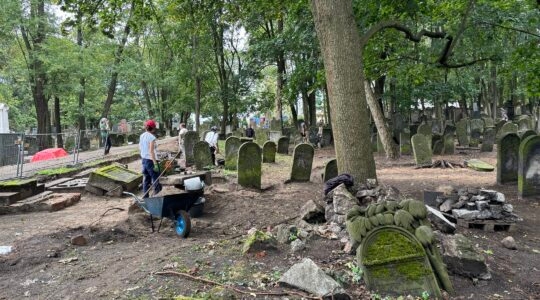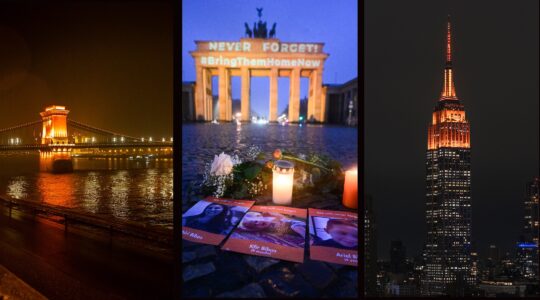NEW YORK (JTA) — Almost as soon as the catastrophe in Japan began unfolding last Friday, Jewish groups scrambled to figure out how to get help to the area.
In Israel, search-and-rescue organizations like ZAKA and IsraAid readied teams to head to the Japanese devastation zone. In Tokyo, the Chabad center took an accounting of local Jews and began organizing a shipment of aid to stricken cities to the north. In the United States, aid organizations ranging from B’nai B’rith International to local and national federation agencies launched campaigns to collect money for rescue, relief and rebuilding efforts in the Pacific.
But then Shabbat came, and with it the news that a suspected Palestinian terrorist had brutally murdered five family members in the Jewish West Bank settlement of Itamar, and the focus of the Jewish community for a while seemed to shift.
“Not sure who to think about first,” Nadia Levene, a British-Israeli event planner living in Jerusalem, wrote on Facebook on Tuesday. “The devastated remaining members of the Fogel family from Itamar, Gilad Shalit — 5 years in Hamas captivity — or the survivors of the Japanese tragedy and the dangers they may be facing.”
The Orthodox Union, which sent out a message last Friday calling on supporters to donate to the organization’s newly established earthquake emergency fund, sent out another urgent message two days later calling on donors to give money to the OU’s victims of terrorism fund.
As of late Monday, the totals collected by each fund were running neck and neck, the OU’s chief operating officer, David Frankel, told JTA.
“We have an obligation to care for our own,” Frankel said, “but the enormity of the tragedy that happened in Japan is so extraordinary that for the Jewish community not to have an outpouring of support would not only be a denial of one of our primary obligations to care for everyone in their time of need,” he said, but also a missed opportunity to honor the memory of Chiune Sugihara — the Japanese consul general to Lithuania who in 1940 helped save at least 6,000 Lithuanian Jews from the hands of the Nazis by getting them transit visas to Japan.
“The Japanese community helped us in our time of need; this is our way to help them in their time of need,” Frankel said. “We can never repay the debt, but this is the right thing to do.”
By Tuesday, Israeli teams comprised of rescue personnel, emergency medical officers and water pollution specialists had reached the suburbs of Tokyo, and they were in contact with aid workers in the northern part of the country where the tsunami hit hardest, according to Shachar Zahavi, chairman of IsraAid.
Several American Jewish organizations, including the Jewish federation in Chicago and the American Jewish Committee, are funneling money to IsraAid for disaster relief in Japan.
In Tokyo, the Chabad center commissioned a bakery in Sendai, one of the cities battered by the tsunami, to bake bread for its residents and surrounding areas. The center also trucked several tons of food and supplies to Sendai, Chabad officials said. The officials estimated that Chabad’s relief in Japan is costing approximately $25,000 per day.
In the United States, Jewish humanitarian organizations reported that the money was coming in fast for mailboxes set up to receive donations for Japanese disaster relief.
“We are determined to provide emergency relief as quickly as possible and to work with our partners to provide support over the longer term as well,” said Fred Zimmerman, chairman of the Jewish Federations of North America’s Emergency Committee.
The American Jewish Joint Distribution Committee, the main overseas partner for the Jewish Federations, said it had collected more than $400,000 by midday Tuesday.
What makes the Japanese situation a unique challenge for Jewish humanitarian organizations is the absence of relationships in a country that traditionally has been an aid donor, not a recipient.
Indeed, when the American Jewish World Service, which led the Jewish aid response to the 2004 Asian tsunami, was asked what its aid effort would be for Japan, the answer was none, because AJWS only works in developing countries and has no partners in Japan, spokesman Joshua Berkman told JTA.
The JDC found itself in a similar situation.
“We had no programs in Japan prior to the earthquake; we just worked with the local Jewish community,” said Will Recant, an assistant executive vice president at JDC.
But almost immediately after the earthquake and tsunami hit, the JDC consulted with the Jewish community in Tokyo to identify local Japanese nongovernmental organizations working in the affected areas. By Tuesday, JDC had begun funneling money to JEN, a Tokyo-based organization specializing in shelter reconstruction, support of the socially vulnerable and emergency supply distribution that had managed to send personnel to the ravaged Japanese prefectures of Miyagi and Fukushima.
As with other disasters, Recant said JDC will stick around to help with long-term relief, budget allowing. Only money raised specifically for Japan will be spent on disaster relief. There is no money in JDC’s budget for additional nonsectarian, humanitarian work, Recant said.
While Japan continues to reel from the triple disaster of an 8.9-magnitude earthquake, a massive tsunami and a subsequent nuclear crisis, experts in Israel are trying to figure out what lessons from Japan can be applied to the Jewish state, which lies on two fault lines, the Carmel fault and the Dead Sea fault.
Israel experiences tremors every so often, but the last time a ruinous earthquake struck the area was in 1927, when the West Bank city of Nablus suffered serious damage. An 1837 earthquake destroyed much of the northern Israeli cities of Safed and Tiberias and left thousands dead.
Israeli building codes have been updated for better earthquake safety compliance, but regulations and enforcement still are said to lag behind places like California, which experiences larger and more frequent quakes.
“There’s still a lot that has to be done as far as building codes are concerned,” said Professor Michael Lazar, a tectonics expert at the University of Haifa. “There’s an attempt to encourage people to renovate older buildings and make them earthquake ready, but it really hasn’t caught on.”
A scenario in which Israel’s nuclear facility at Dimona, in the Negev Desert, would face the kind of meltdown scenario situation Japan that is seeing now is much less likely, Lazar said, because Dimona is far from the tectonic lines that cross Israel.
“But,” he cautioned, “it’s hard to tell how an earthquake would disperse.”
(To donate to a Jewish earthquake relief fund, visit http://blogs.jta.org/telegraph/article/2011/03/15/3086433/japan.)
JTA has documented Jewish history in real-time for over a century. Keep our journalism strong by joining us in supporting independent, award-winning reporting.





